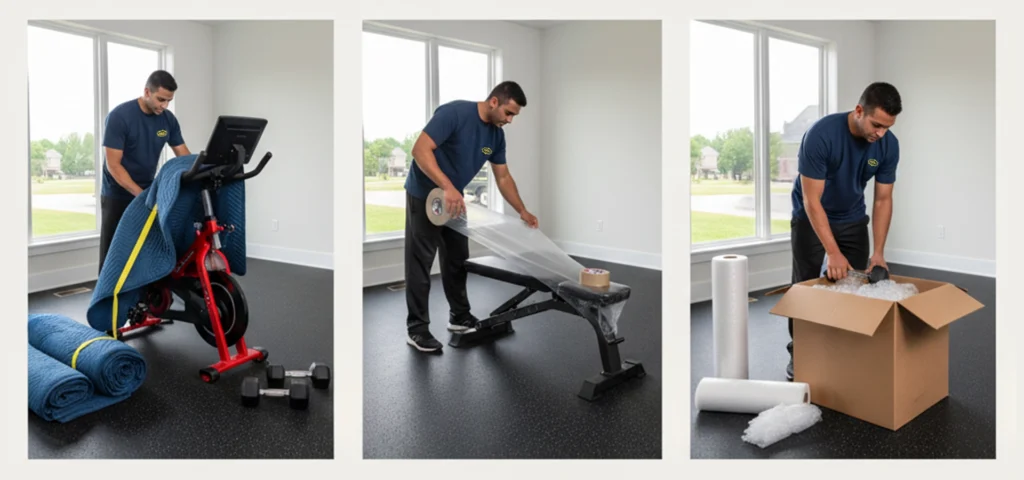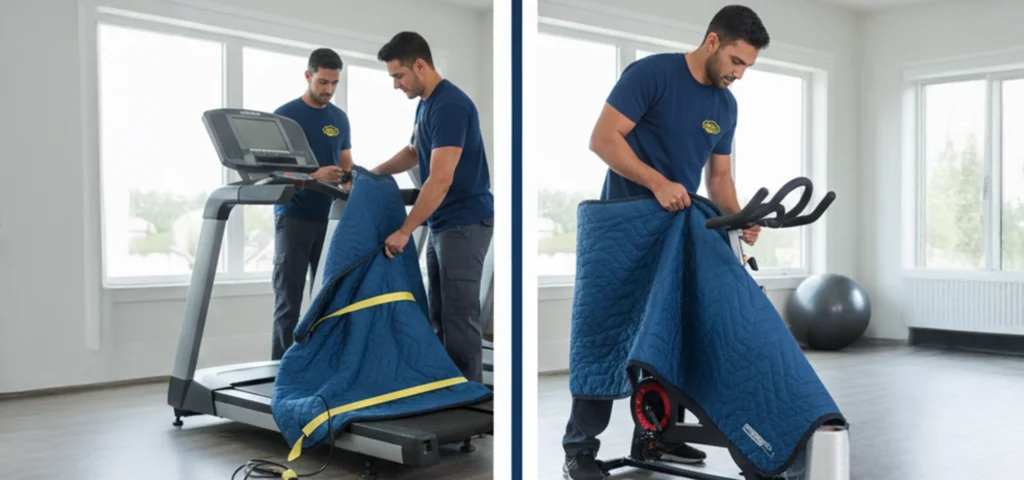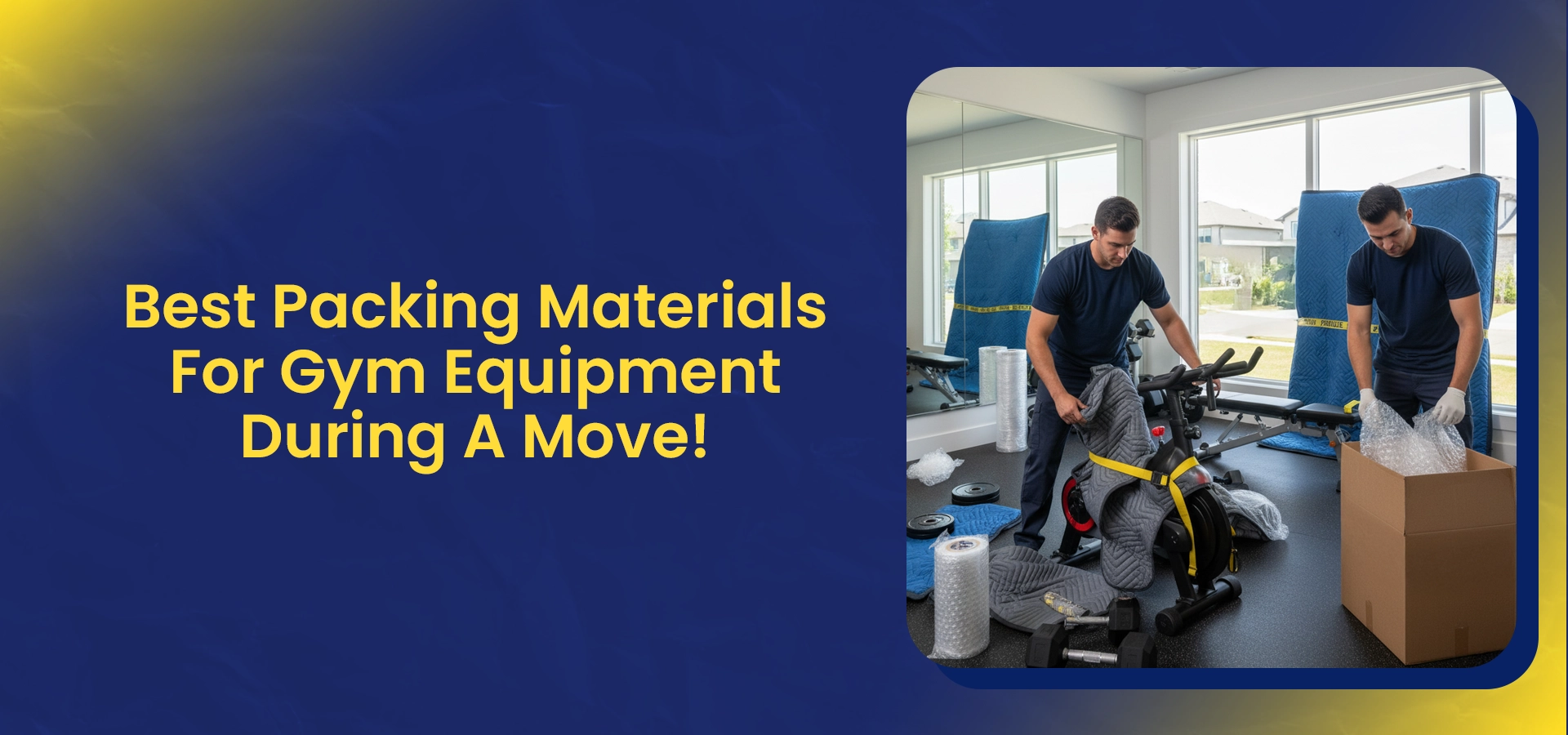Packing gym equipment is never as simple as boxing up clothes or books. Dumbbells, treadmills, and weight benches are heavy, awkward to handle, and costly to replace if damaged. That’s why choosing packing materials for gym equipment isn’t just a good idea, it’s necessary. The right supplies will protect your gear from scratches, dents, and even internal damage during lifting, loading, or transport.
At Economical Movers, we have helped countless homeowners and businesses relocate their gyms, and one thing is clear: the packing stage makes all the difference.
With over 4 years of experience and more than 600 successful moves under our belt, we know which materials truly hold up under the pressure.
In this blog, we’ll walk you through the best options, from wraps to shock-absorbing supplies, so that you can move your fitness equipment with confidence.
Essential Packing Materials For Gym Equipment

When it comes to gym equipment packaging, using the right materials ensures your machines and accessories stay protected, secure, and damage-free during every move.
1. Bubble Wrap
We use bubble wrap for gym equipment which are smaller or delicate, such as dumbbells, kettlebells, and detachable machine parts. Wrapping each piece carefully cushions it against bumps and knocks during transport, preventing scratches, dents, or chipping. We also layer the wrap around protruding parts and secure it with tape to prevent anything from shifting for added fitness equipment protection.
2. Moving Blankets
Large gym machines, treadmills, ellipticals, and rowers require moving blankets. These thick blankets protect against dents, scratches, and scuffs while loading, unloading, and during transit. Professionals secure blankets tightly using shrink wrap or strong tape to prevent slipping, ensuring the equipment stays fully covered throughout the move.
3. Heavy Duty Cardboard Boxes
Accessories like yoga mats, resistance bands, handles, or even free weights fit best in heavy duty boxes. Reinforced boxes handle heavier loads without collapsing and prevent items from moving inside. Proper labelling and padding inside the box ensure nothing gets lost or damaged.
4. Shock Absorbing Materials
Foam padding or Sorbothane pads are essential for motorized machines or sensitive electronics. They absorb vibrations and impacts that occur on the truck or during handling. Using these pads under the equipment keeps it stable, reduces wear on mechanical parts, and prevents operational issues later.
5. Stretch Protective Wrapping For Weights
Stretch film is the finishing touch. It holds moving blankets in place, bundles smaller items together, and adds an extra layer of protection against dust, dirt, or moisture. It also helps prevent cables, loose parts, or attachments from getting tangled or lost during the move.
These are essential protective materials you need for safe gym equipment packaging. Next, we’ll cover practical tips on how to use each of the packing materials discussed above.
Tips For Packing Specific Gym Equipment
When it comes to gym equipment, you don’t need to be an expert mover to keep things safe. Here’s how you can handle different items with the right materials:

1. How To Pack Dumbbells, Kettlebells, Barbells
- Begin by arranging your weights so they are easy to handle. Wrap each one to prevent scratches. Use bubble wrap because it works best.
- Place the wrapped weights into sturdy boxes. Make sure there’s space around them and fill gaps with packing peanuts or foam sheets to prevent movement.
- For barbells, protect the ends using edge protectors before placing them in boxes.
- Finally, secure the boxes with heavy duty tape, reinforcing all edges to support the weight.
2. How To Pack Cardio Machines (Treadmills, Exercise Bikes)
- Start by covering all surfaces to protect them from scratches. Use moving blankets for full coverage.
- Add shock-absorbing materials under heavy parts or feet to reduce impact while moving.
- Wrap the entire machine with stretch film or shrink wrap to hold blankets and components in place.
- Protect delicate corners with edge protectors and secure everything with heavy-duty tape.
3. How To Pack Strength Training Equipment (Benches, Racks)
- Disassemble what you can and organize parts. Wrap each piece in moving blankets or foam sheets for protection.
- Small components are placed into boxes cushioned with packing peanuts, and their edges are protected with edge protectors.
- Wrap larger assembled sections with stretch film or shrink wrap to maintain their stability.
- Reinforce everything with heavy-duty tape and add extra bubble wrap to exposed metal or padding to ensure maximum protection.
Additional Gym Packing Materials To Consider
You can use these exercise equipment packing to fill in empty spaces, keeping your items snug so nothing shifts or gets damaged during the move.
- Packing Peanuts: Fill empty spaces in boxes to prevent shifting and protect contents.
- Foam Sheets: Wrap around equipment to provide extra cushioning.
- Edge Protectors: Shield corners and edges from damage.
- Heavy-Duty Tape: Ensure boxes are securely sealed.
Final Words
Moving gym equipment is all about careful planning and taking the right precautions. Keeping items stable, organized, and properly prepared before transport helps prevent damage and makes the process much smoother.
Safety should always come first. Wear gloves for a firm grip, supportive shoes for balance, and a lifting belt if you are handling heavy pieces. Keep simple disassembling tools such as wrenches, screwdrivers, and Allen keys handy to safely take apart benches, racks, or cardio machines before packing.
With thoughtful preparation and attention to safety, you can move your gym equipment confidently and have everything ready to set up quickly in your new space.



